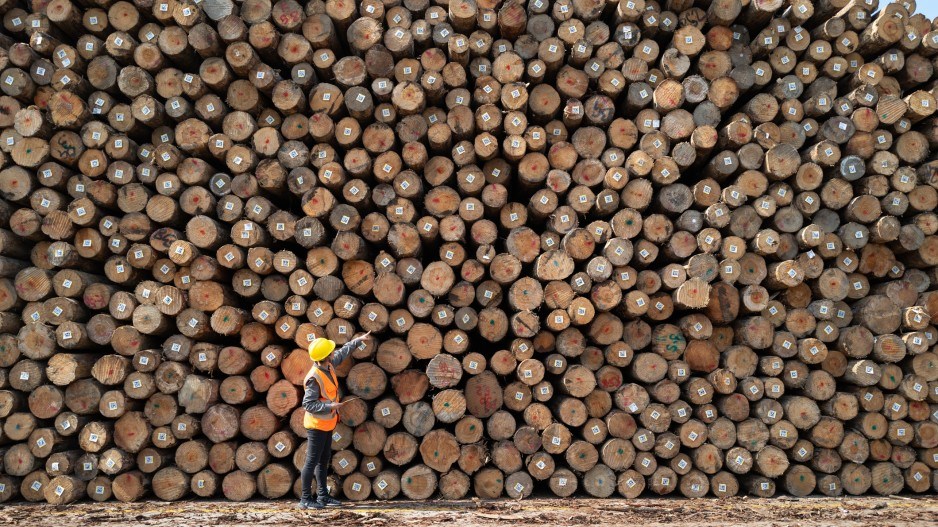Every January, the natural resource sectors gather in Prince George for a pulse check on the state of energy, mining and forestry in sa国际传媒 This year’s Natural Resource Forum will attract over a thousand people from government, First Nations, industry, labour and regional communities.
If you think it’s hard to get a Canucks ticket these days, try getting one to some of the forum’s events this year. No way. Nada. Sold out. They are the hottest tickets in town.
Interest in the present and future of sa国际传媒’s natural resources has never been higher – and neither have the stakes. That is particularly true for those of us who work in sa国际传媒’s forest industry. This year’s gathering in Prince George comes at a time when key indicators in forestry are flashing red, foremost among them the current critical shortage of timber for sa国际传媒 mills.
In sa国际传媒, timber supply – also known as fibre supply – depends on harvest levels. In the last five years, harvesting on public forest lands dropped by almost half, from about 60 million cubic metres in 2018 to 35 million cubic metres in 2023. The actual harvest in 2023 was 42 per cent below the allowable annual cut and 18 per cent below the actual harvest in 2022.
This steep trajectory has ignited a wave of curtailments and closures that have shuttered local sawmills along with the pulp and paper and value-added plants that rely on their outputs and residuals, resulting in the loss of an estimated 4,500 direct jobs in the last two years.
All sa国际传媒 resource sectors know from hard-won experience that change is inevitable, important and frequently necessary. But a lot of change – all at once in a relatively short period of time – can have unintended consequences. Notwithstanding a declining annual harvest due to fire, insects, market conditions and new policies, some of the consequences now unfolding in sa国际传媒’s forest sector extend beyond what could be expected.
Left unchecked, current dynamics in the sector will result in a structural deficit in three ingredients required to meet growing demand locally and globally for wood products for green and affordable housing: Infrastructure, investment and workforce. And it will hinder sa国际传媒’s ability to deliver the low-carbon and renewable bioproducts needed for a net-zero economy.
One thing everyone can agree on is that the sa国际传媒 forest industry is in transition. Premier David Eby and Forests Minister Bruce Ralston have committed to working with the industry, First Nations, labour, and local communities to stabilize fibre supply and build a more predictable and sustainable path forward. Some new strategies and tools are already on the table. But more are required, particularly in the following key areas.
First, the province has committed to increasing natural resource revenue sharing with First Nations as part of implementing sa国际传媒’s Declaration Act on the Rights of Indigenous Peoples. The forest industry strongly supports this policy. Companies are co-developing new partnerships and collaborations with local First Nations. Western Forest Products recently entered into an equity agreement on Vancouver Island with the Tlowitsis, We Wai Kai, Wei Wai Kum and K’ómoks First Nations. Another example is the partnership Canfor has with the Lheidli T’enneh in Prince George on a new facility for renewable biofuels and biochemicals. Further progress on revenue sharing as well as new government-to-government agreements between the province and First Nations are fundamental to a transition in the sa国际传媒 forest sector.
Second, we need to get better at navigating and avoiding short-term disruption in fibre supply while longer-term change is happening. Current delays in regulatory decision-making processes can add two years or more to development and approval of sustainable harvesting. The relationship between primary and secondary producers must evolve to enable more economic fibre to flow to local markets and value-added manufacturing.
And third, we need to act together on the extraordinary convergences now being driven by climate change. Managing forests for fire resilience, public health and safety, cultural values, wildlife and biodiversity, carbon, and wood products and biomaterials are now deeply intertwined. Taking a more integrated approach to management and conservation at a landscape level will protect communities and forests. It can also support Indigenous reconciliation and climate solutions. And it can generate renewable fibre that can provide local employment and economic opportunities.
Notwithstanding the current transition, the forest sector is still a very significant part of the economic base of British Columbia with outsized influence on wages, exports and government revenue. The industry has significant expertise, resources and heavy equipment that can be deployed to reduce the risk and impact of wildfires. Measurable social, economic and environmental benefits will flow from restoring forest ecosystems to a more fire-resilient state in ways that can also contribute to a more resilient forest manufacturing sector.
Linda Coady is president and CEO of the BC Council of Forest Industries.




